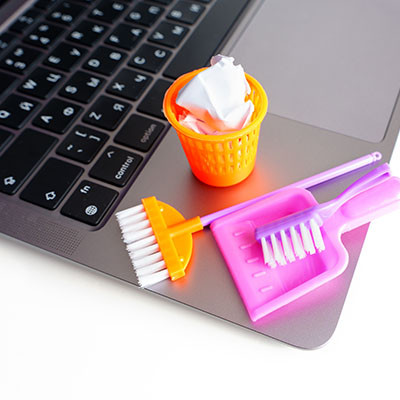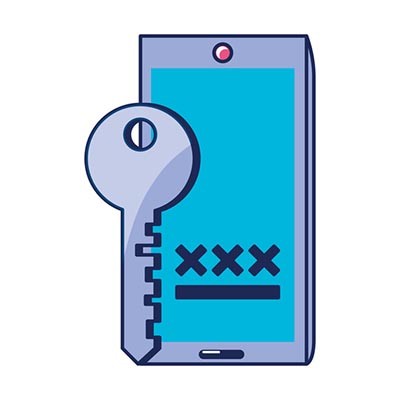For the longest time, smartphone manufacturers looked to develop devices that came with unique features in all different manners of form factors. Nowadays, however, there are very few phone manufacturers and those that are left have pretty much decided, for now, what the smartphone would look like. Even the ones that fold in half look and function pretty much the same. In this week’s blog, we will take a look at the declining innovation in the smartphone market and why it may not be a bad thing.
k_Street Consulting, LLC Blog
With technology becoming more mobile, the way we interact with tech has changed considerably. Now that dial-up has evolved to broadband and cellular networks have dramatically improved, technology has allowed people to become more connected than ever. Your business can improve its communications and operations with the right mobile technology.
Many individuals were skeptical about foldable phones when they were first introduced, all thanks to higher prices and stories about how fragile they are. That said, those who have stuck with the concept have contributed to the excitement and built it up to be a legitimate option that actually makes sense.
Autocorrect is one of those things that you either love or hate, depending on how many times it has saved you from embarrassment or been a source of embarrassment. Without appropriate context, it can sometimes struggle to offer you appropriate suggestions. Thankfully, you can make autocorrect work a bit better for you, and if you are just sick of it altogether, you can disable it.
Travel has become pretty commonplace for businesses, and today, business travelers can do more than ever thanks to dynamic mobile computing tools. In this month’s newsletter, we will outline some of the most important mobile technologies available to help serve a business while its people are on the move.
Often smartphones are a double-edged sword for businesses: on one hand, they are a great money saver if an employee is willing to use their own for business purposes, but this does leave your business vulnerable in a few ways. Fortunately, if the benefits are something you can't function without, the vulnerabilities are simple enough to shore up with something called mobile device management.
For many people, their mobile device contains a mixture of sensitive information and personal details. In some cases, some of the data isn’t even theirs—instead, it belongs to their workplace. Naturally, this makes many people less inclined to share the use of their device, but most people also want to avoid being rude.
In our last blog we gave you some advice on what to do if your phone has gone missing, but if it has been stolen or lost for good, there are more pressing issues than the anger and loss you feel; you need to ensure that you and the people you do business with are protected. Let’s take a look at what you need to do to make that happen.
Imagine for a second you are out to a socially distant dinner date with the friends that you barely get to see. You wrap up dinner and say your goodbyes and when you get to your car you realize that you don’t have your phone. COMPLETE PANIC! Your whole life is on your phone. Now imagine that when you went back to the restaurant to get your phone, it wasn't anywhere to be found. We’ll talk you through how to proceed.
Mobility is important to today’s workers and can be valuable to many different types of businesses; so much so that businesses demand that employees stay connected. Sometimes, especially when in public, this can become a social problem. Today, we will discuss mobile phone etiquette and five ways that you can improve yours.
As serious as they are, cyberattacks are not always labeled with the most serious-sounding names. We are, of course, talking about phishing: the use of spoofed email addresses and fraudulent messages to get hold of data, or whatever goal the attacker has in mind. One of the silliest-sounding versions of phishing—smishing—has proven to be of particular risk.
The modern smartphone user is dedicated, spending an average of three hours and 15 minutes per day using them. On average, people check their phones 58 times a day. With this amount of traction, it’s not a surprise that people want to get the best devices they can. Today, we will take a look at what makes a flagship phone, and give you a couple of popular options that are available for the power user right now.
Voice over Internet Protocol, or VoIP, is a common business communication solution nowadays… but it is still possible that you aren’t aware of what VoIP is and the many benefits it can deliver to your operations. To remedy this, let’s briefly review the concepts behind VoIP, and how your business can embrace them to its advantage.
Google and Apple have recently started an initiative with local governments to try and help prevent the increased spread of COVID-19. Basically, this app would notify people if there were positive COVID-19 test results in their area. While this does bring up some major privacy concerns, we wanted to discuss something else today: the prevalence of false warnings that have already been forced onto mobile devices. Let’s dig in.
Laptops have proven to be one of the more useful gadgets for businesses and business users. Not only do they hold their own in performance against a desktop, their portability is another consideration that cannot be ignored. However, this portability means that they are at least somewhat reliant on their battery, which begs the question: can they be left plugged in otherwise?
The smartphone is quite possibly the most important invention of our era. As time has passed, these devices have only continued to improve. These improvements have led to ever-increasing demands on the batteries that power our devices... batteries that, for about a decade, have changed very little. Here, we’ll examine the batteries that power our smartphones, and what we may see happen to them in the future.
Smartphones are everywhere. You go to the supermarket, people are on their phones, you go to the gym, people are on their phones. Go into the office? You guessed it...you see a lot of smartphone use that may not be in the best interest to organizational profitability. The question becomes, do smartphones help or hurt business? Let’s get into it.
If you’re like most people nowadays, your mobile phone is currently well within your reach (and that’s assuming you aren’t reading this blog on it). The fact that most people keep their phone on them at all times has greatly contributed to these devices becoming a part of any given work-related process. One major way is the implementation of two-factor authentication, which we’ll discuss as a part of this week’s tip.
Bring Your Own Device, or BYOD, has become a very popular option for businesses seeking to save a bit of their budget on obtaining and maintaining devices for their employees. While this is an economically commendable practice, it has the potential to generate risks for your business if left unchecked. Let’s discuss the pros and cons of BYOD, and how you can make it work for your business.
In today’s working world, not using technology to work on your tasks can be seen as an oddity. Taking this into account, choosing the device that best suits your office’s work style is an important consideration to make. For this week’s tip, we’ll dive into some of the reasons that you may want to standardize laptops in your office.
Mobile devices have made conducting business much more convenient, as the right application can allow transactions to be made from anywhere you may be reading this blog. However, this increased accessibility has come with a price - threats to mobile security - which requires any business to be aware of the state of cybersecurity, especially concerning mobile devices, now and in the foreseeable future.
Smartphones have steadily increased in their capabilities, and as they have done so, they have resultantly gathered more and more data that needs to be secured against potential security threats. Fortunately, there are also more ways to protect your smartphone than ever before. For today’s blog, we’ll take a look of the options you have to secure your devices.
With business communications, there is no room for complications that could work to completely derail your organization. Do you know the best way to take full advantage of your business’ communication solutions, and which technologies can help you facilitate this level of productivity? This month we take at some of the most utilized business communications tools and ways to leverage them properly.
There’s a new augmented reality game on the market these days. Perhaps you’ve heard of it - a title called Pokemon Go, which lets you capture virtual monsters that “appear” on your smartphone’s camera. However, hackers have seized this opportunity to infect players’ mobile devices with a backdoor called DroidJack, which uses the mobile app’s immense popularity to its advantage.
 There was a time when finding a mobile device for your business meant choosing the best laptop. Thanks to all the new mobile devices hitting the market, you now have smartphones, tablets, netbooks, and more to choose from. You can know which device is right for your business by reviewing these five points when doing your shopping.
There was a time when finding a mobile device for your business meant choosing the best laptop. Thanks to all the new mobile devices hitting the market, you now have smartphones, tablets, netbooks, and more to choose from. You can know which device is right for your business by reviewing these five points when doing your shopping.
 The Internet has become an extremely efficient shopping tool for consumers. Nearly all available products can be found quickly and easily online. Traditionally, when shoppers settle on what they'd like to purchase, they charge their credit cards, but a new school of digital payment has provided a more secure alternative. How will this affect your business?
The Internet has become an extremely efficient shopping tool for consumers. Nearly all available products can be found quickly and easily online. Traditionally, when shoppers settle on what they'd like to purchase, they charge their credit cards, but a new school of digital payment has provided a more secure alternative. How will this affect your business?
 At this point, mobile technology use is more than just another trend; it's ingrained into almost every facet of our culture. In fact, the majority of adults in the United States not only carry cell phones, but 56% of all American adults carry smartphones. If you haven't tapped into the potential of mobile marketing, your company is missing out!
At this point, mobile technology use is more than just another trend; it's ingrained into almost every facet of our culture. In fact, the majority of adults in the United States not only carry cell phones, but 56% of all American adults carry smartphones. If you haven't tapped into the potential of mobile marketing, your company is missing out!
































